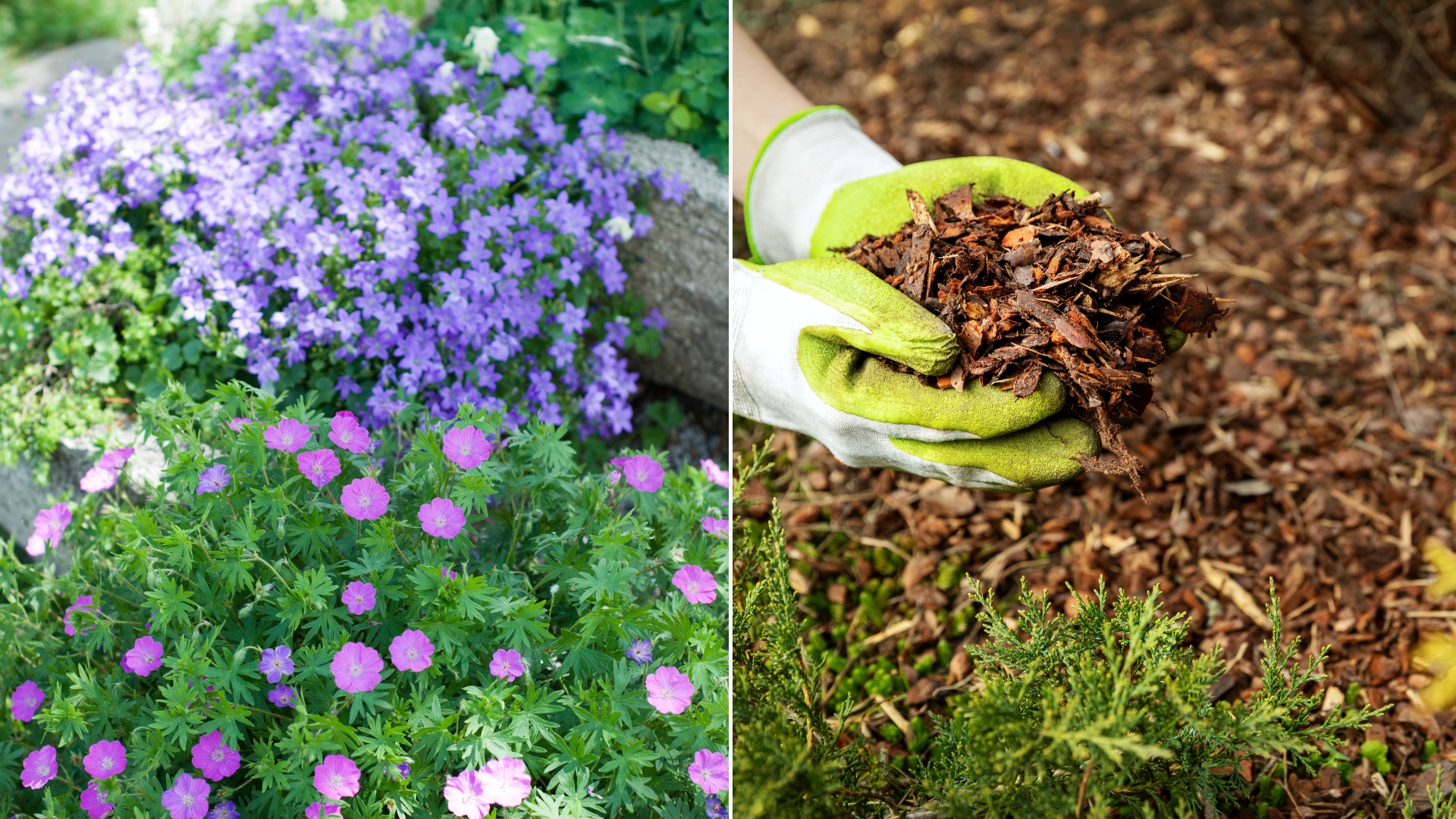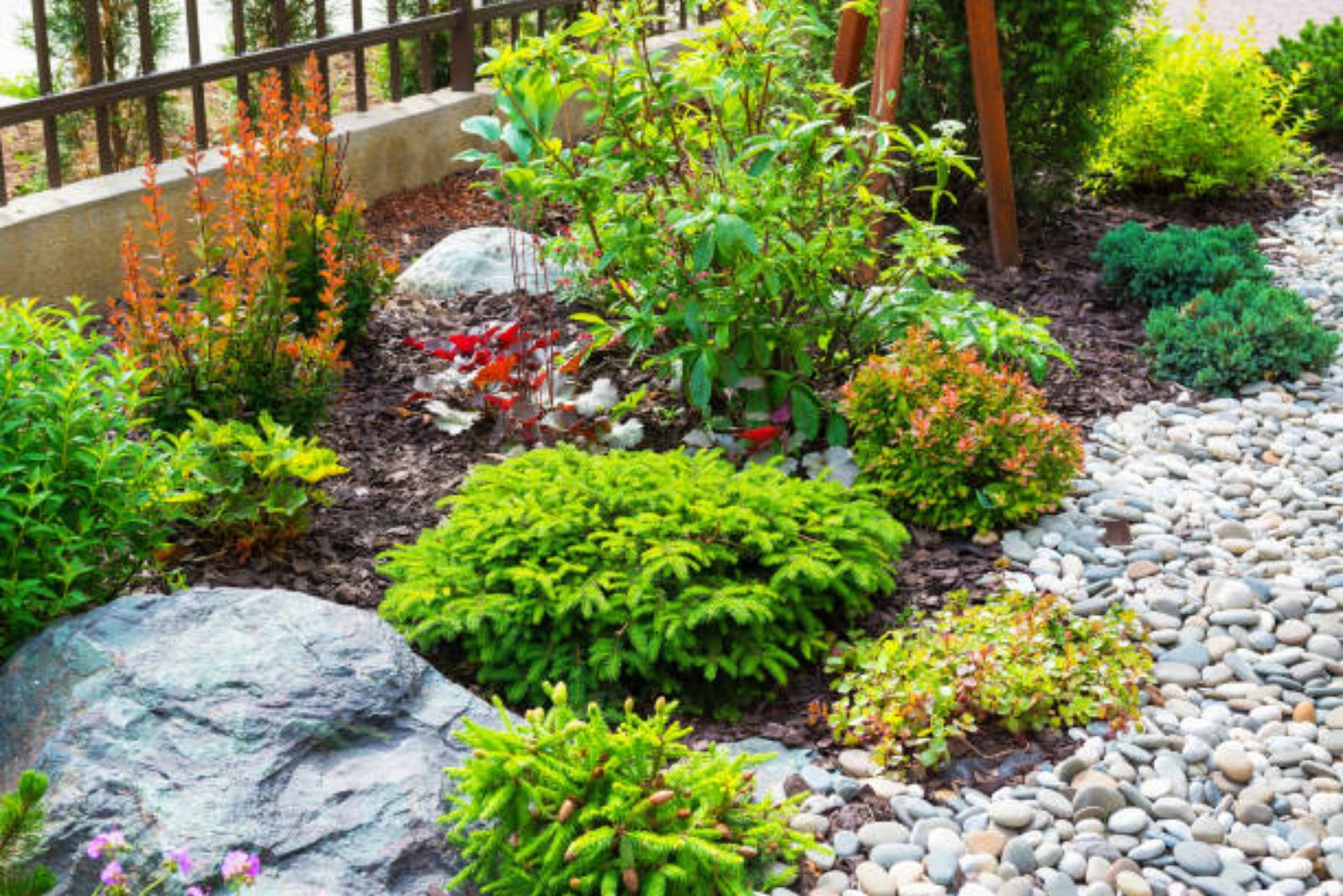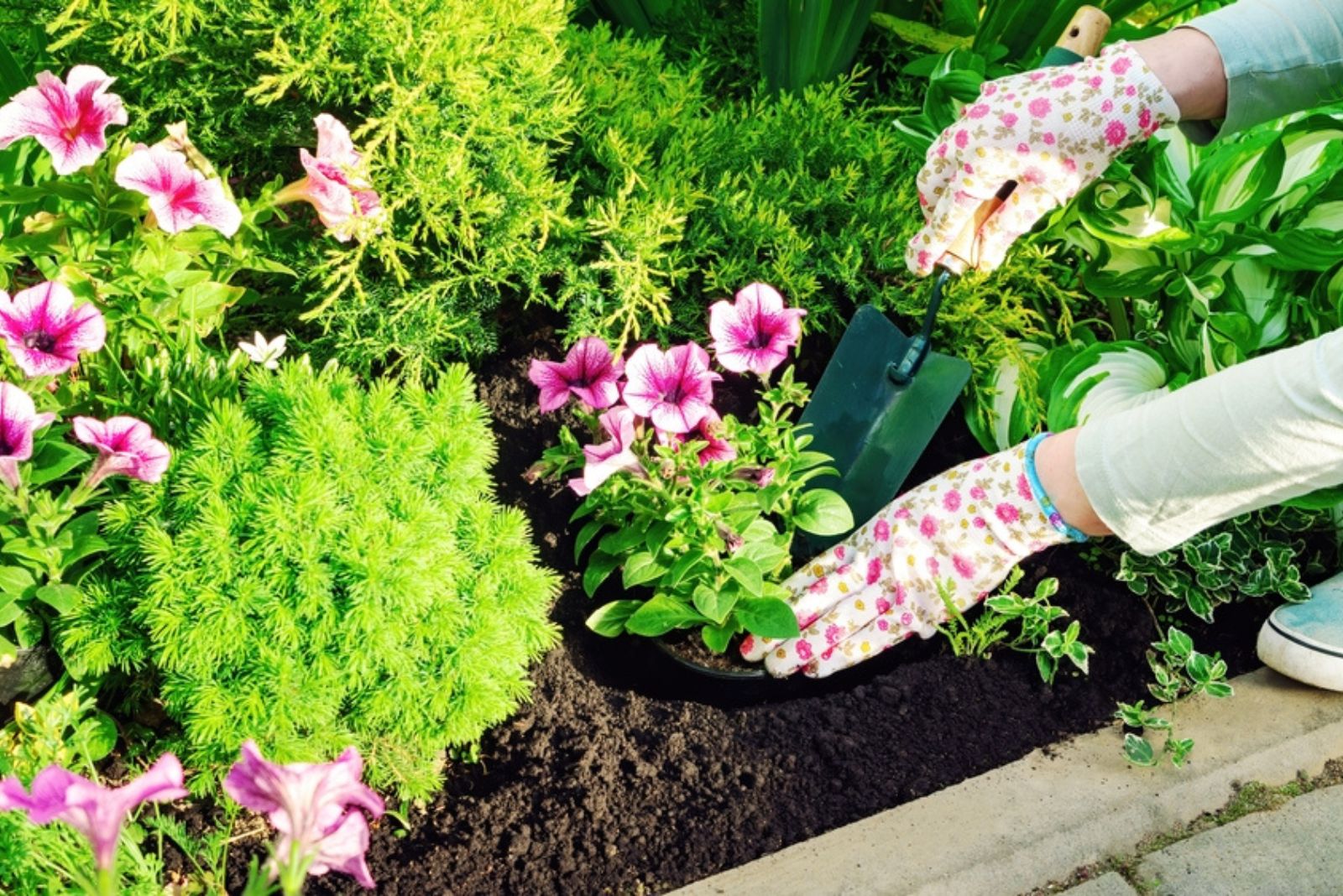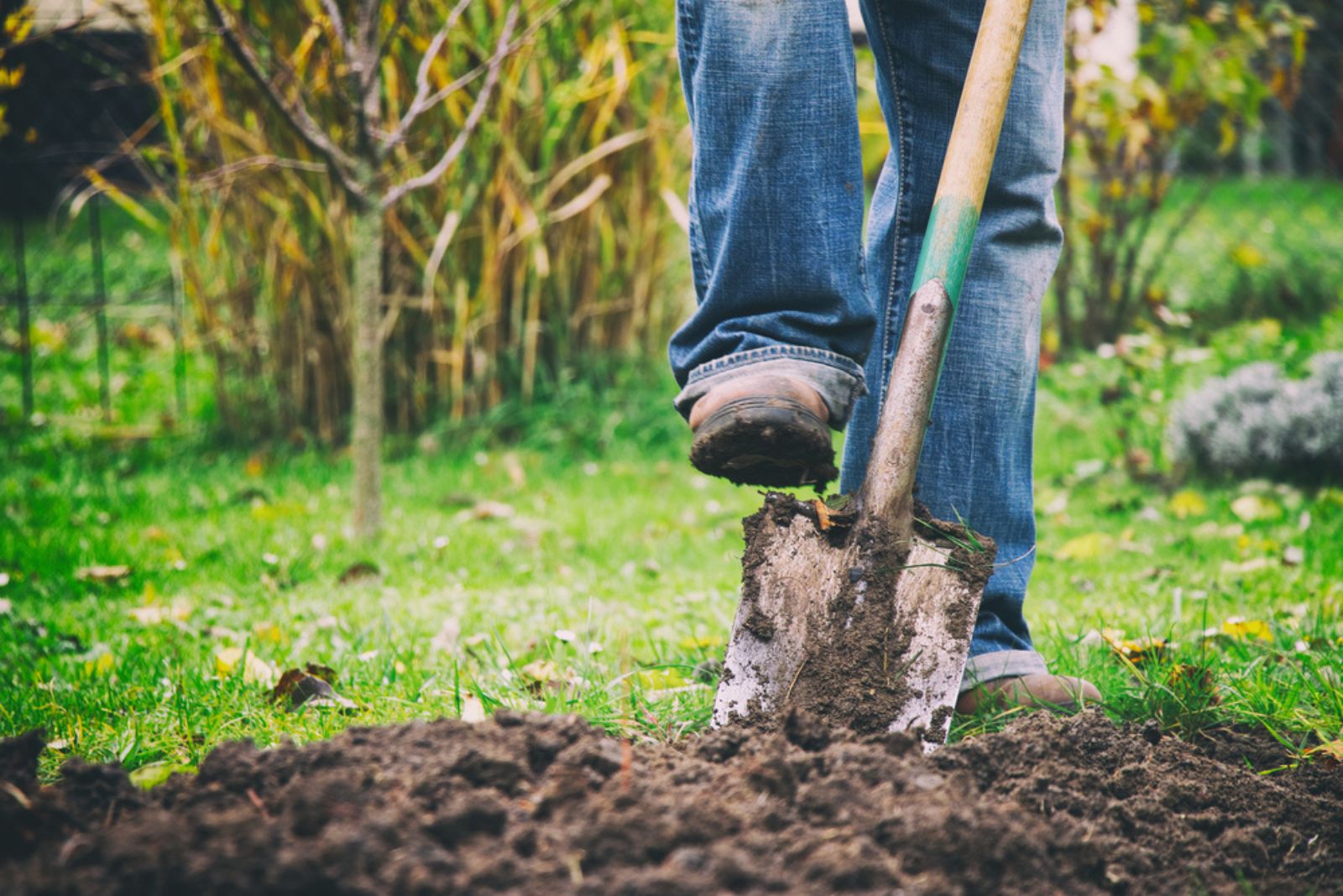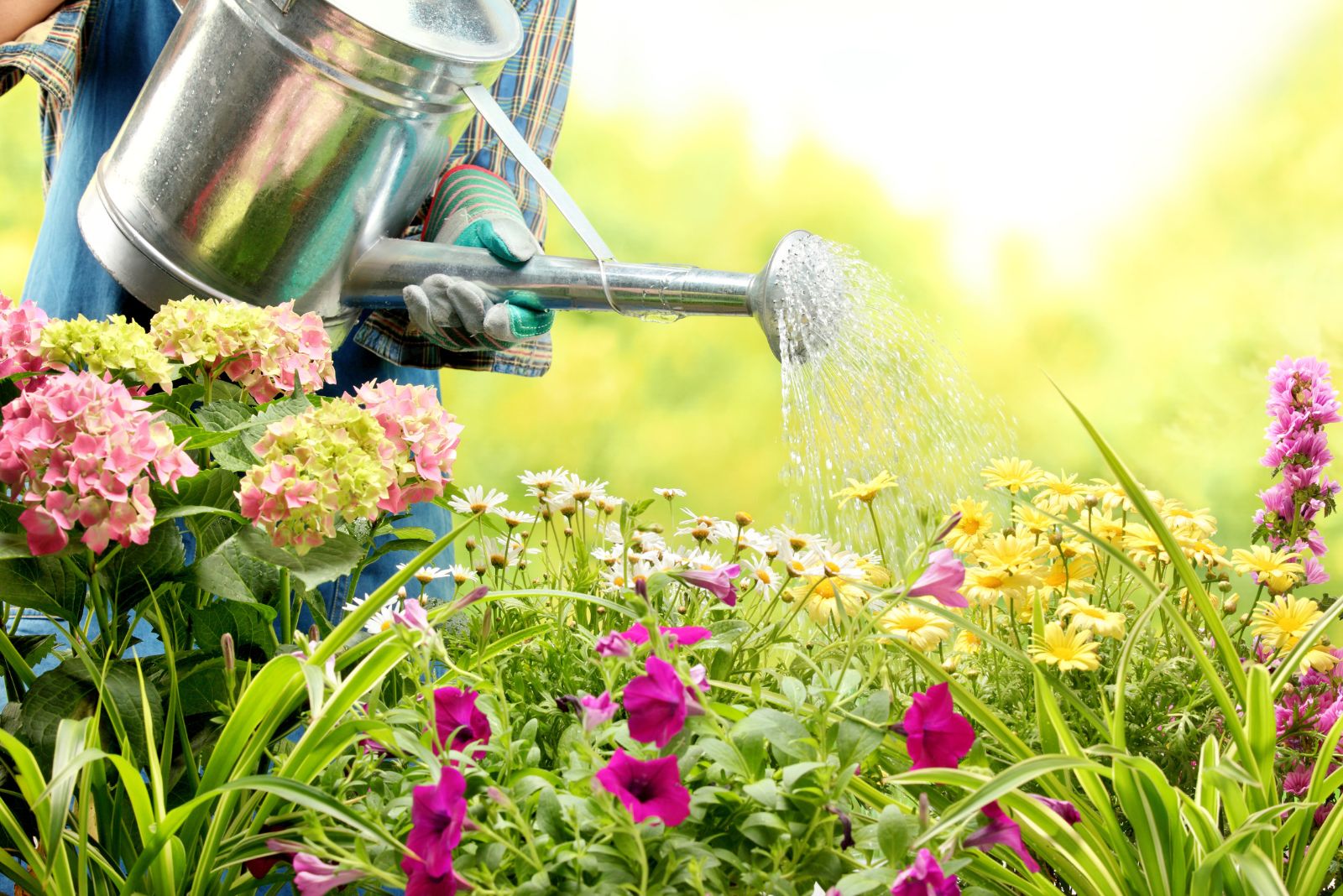Weeding is one of the most tedious gardening chores out there, so it’s not surprising that we constantly look for new ways to make it easier.
There are many ways to get rid of them, but some will keep them out of your vegetable and flower beds for good. That means not having to deal with them in the first place.
These methods include mulching, planting ground covers, preparing the soil before planting, and more.
Discover more about these techniques in the following sections, and prevent those unwanted plants from taking all the nutrition and moisture from your flowers and veggies!
1. Mulching
Weed seeds require sun exposure in order to germinate and you can prevent them from emerging by depriving them of this light source. (1)
By spreading a three-to-four-inch thick layer of organic mulch (compost, bark), you can block out the sun rays and suppress weed emergence.
You can also use inorganic mulches, such as rubber nuggets, rocks, landscaping fabric, etc., but they may not be as visually appealing as wood chips, bark, or nuggets.
Or you can combine the two, and lay a landscaping fabric on top of the soil and spread bark, gravel, or small stones on top of it to make it more appealing.
And if you’re using fabric, make sure to first install it and only then cut some holes in it to plant your flowers and veggies. This method will be most effective when it comes to preventing weed emergence.
2. Planting Ground Covers
Using ground cover plants that suppress weeds is a great environmentally friendly way to get rid of the unwanted plants from your backyard for good.
And the best part about it is that you don’t have to use classic ground cover plants to make this happen.
Plant your favorite species densely, using every inch of the given space to create a dense cover that will block the sunlight and prevent weeds from emerging.
This technique works the same as mulching. If weed seeds don’t get sunlight, they won’t be able to germinate, produce roots, and establish in that location.
As your desirable plants grow, they will overcrowd any weeds left there and deprive them of all the moisture and essential nutrients they need for growth.
3. Preparing The Soil Before Planting
I’ve been into no-till gardening for a while now and it’s been a game changer. It not only reduces the amount of time I spend preparing the ground for planting, but it also reduces weeding chores.
There are many weed seeds in the ground and if you till the soil or dig it over and expose those seeds to sunlight, they will eventually sprout.
You then have to wait until they germinate in order to get rid of them completely if you don’t want them to compete with your flowers for nutrients.
However, with no-till gardening, you won’t have these issues. You simply have to spread a decent layer of compost, green manure, or well-rotted animal manure over the soil in fall and let it sit like that.
Rain and earthworms will take all the nutrition into the ground without allowing the weed seeds to see the light of day.
4. Brushing Up Your Watering Technique
The key thing when watering your plants is to irrigate them deeply so as to allow them to develop deep roots.
This technique will make them more drought-tolerant and have them growing optimally. At the same time, weeds will struggle because they usually have shallow roots that only have access to surface moisture.
Once that water evaporates, the weeds will dry out, but your plants will be safe as they’ll have more than enough moisture in the depths of the soil.
Drip irrigation systems and soaker hoses are excellent because they reduce the amount of time you have to spend watering your plants. They also deliver moisture straight to your plant’s roots, keeping the leaves of your plants dry and minimizing water waste.
Finally, make sure to irrigate your plants in the morning so that they can absorb all the moisture they need before the midday heat causes it to evaporate. This will also reduce the possibility of weed germination because the soil surface will quickly dry out.
Your plants’ roots will be safe, though, if you’ve trained them to grow deep and strong.
P.S. Avoid watering your plants at night because this will keep them wet for too long, risking the development of fungal diseases and favoring weed germination.
5. Weed Like A Pro
There are many methods of removing weeds from gravel or soil, and one of the easiest ones is getting rid of them by hand.
You should do this before planting and then mulch the area to prevent any lingering seeds from emerging.
Also, if pulling the weeds by hand isn’t an option, you can dig up the entire area, but not too deep. The digging has to be shallow so that you don’t expose too many dormant seeds to light and cause a “weedfestation.”
The key tip I have for you is to get rid of weeds before they flower to prevent them from going to seed and spreading all over your yard.
And, of course, when pulling them by hand, make sure to remove the entire taproot to keep the weeds from coming back.
Bonus: Best Way To Kill Weeds In Flower Beds
I believe that the best and safest way to kill weeds in flower beds is by pulling them out by hand.
This way, you’ll remove the entire taproot and prevent them from emerging again. And if you do it before they flower and go to seed, you won’t have to worry about the weeds self-seeding and spreading all over your garden.
I don’t prefer or recommend using herbicides in flower beds, especially if you have small children and pests.
But if you can’t get rid of these unwanted plants any other way, make sure to get the selective ones, because non-selective weed killers will destroy anything in their path.
Find those that are safe to use in flower beds and follow the manufacturer’s instructions to a T.
As you can see, there are a few things you can do to prevent weeds from stealing the precious sunlight, moisture, nutrients, and space from your flowers.
Some spread rapidly, so make sure to get rid of them as soon as you notice the first sign of them.
References:1. Bolles, B. (2015). How Did Those Weeds Get In My Landscape?. UF IFAS Extension.

